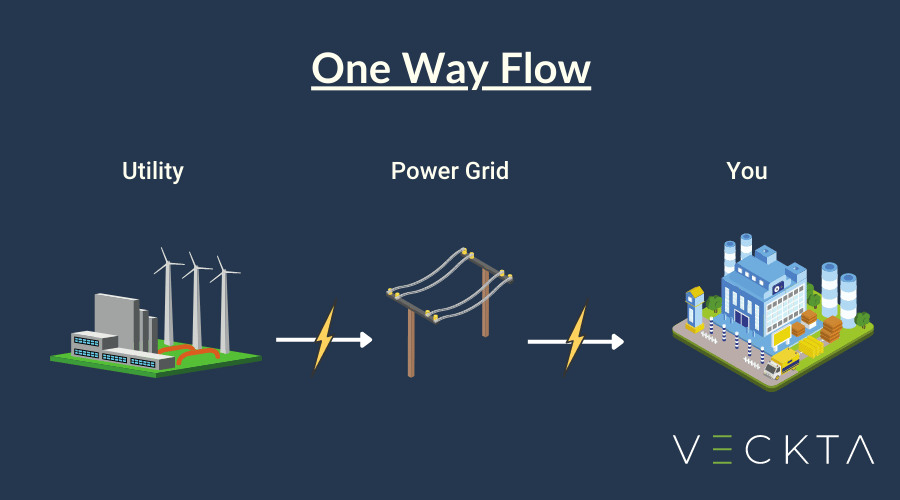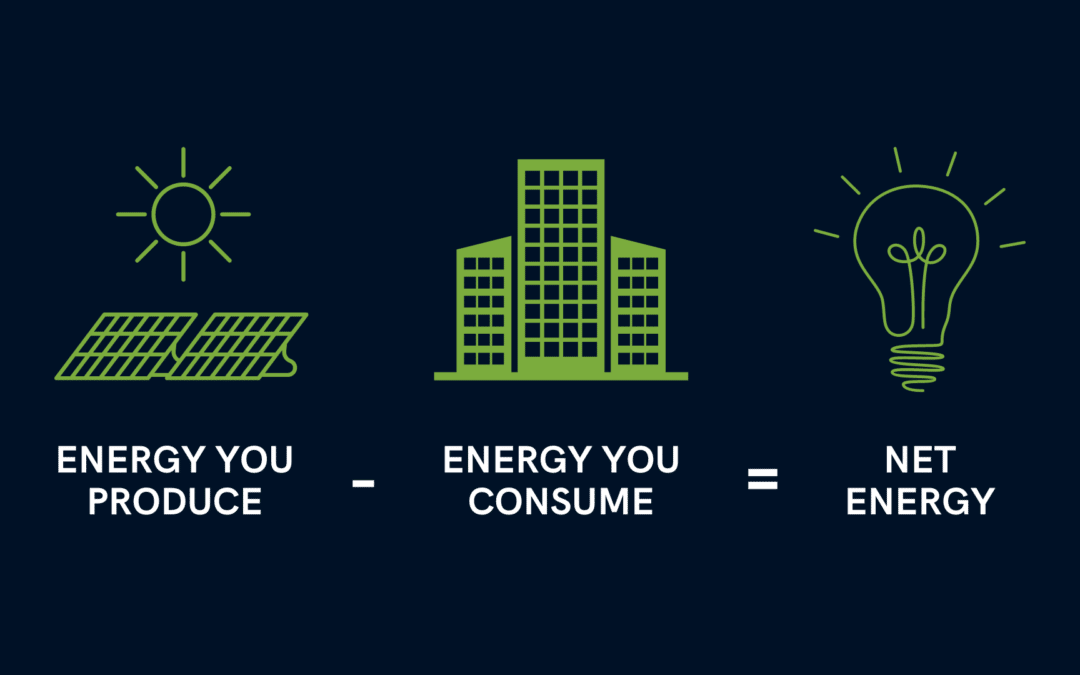When we turn on the lights, at home or in the office, it comes at a cost. Power isn’t free. How much we pay depends on how many lights, and how long we leave them on for. Calculating your bill typically means lining up your power usage against a rate card with set prices (called a “tariff” in the world of electrical utilities). Historically, most energy consumption was a one-way flow.


Utilities generated power, transmitted it through the grid to the consumer, and the consumer then used the electricity. With the advent of solar power, two-way flows of power have become much more common. Energy users (both commercial and residential) will, at certain times of the day, generate more electricity than they can consume or store at their location.
Excess power flows into the grid, and helps to provide power to the utility’s other customers. Utilities generated power, transmitted it through the grid to the consumer, and the consumer then used the electricity. If you are exporting power from your site into the grid, you should be compensated for it. After all, your utility will be charging their other customers when they consume your excess electricity. Fair is fair.
Which brings us to an important question … how should you be compensated for the electricity that you export?
Calculating Net Metering
Net Metering is one style of compensation, and it is one that typically falls in favour of the energy exporter. (That is one of the reasons utility lobbyists are campaigning hard against it!) Under net metering, all of the electricity you send out to the grid is balanced against what you imported, and “netted” off of your bill. The best way to explain is by an example:
Example Bill Calculation under Net Metering:
Let’s suppose you are subscribed to a net metering tariff where you pay $0.10 per kilowatt hour of electricity used, and have installed a solar system at your premises.
In an example month you imported most of your electricity, but sometimes you generated more that you could use and exported the excess:
Monthly imports (kWh): 1,000,000
Monthly exports (kWh): 100,000
To calculate your bill at the end of the month your imports and exports are netted against each other (hence: net metering). Your bill would be calculated as:
Net imports (kwh) = Monthly imports – monthly exports
= 1,000,000 – 100,000
= 900,000 kWh
This would leave you with a monthly bill of 900,000 kWh x $0.10/kWh = $90,000
In months where you import less than you export, you could even make a profit…depending on the rules in your local market your utility might even pay you!
Net metering impacts your financial return on solar, so is important in determining how valuable solar is as part of a complete onsite energy solution at your premises. When suppliers of solar systems are optimising the size of the system to build, they calculate the value of excess energy which will be exported. If you get paid more for exports, it makes sense to build a bigger system; if you get paid less, your optimal system will be smaller.
Alternatives to Net Metering
Net metering isn’t the only option. There are other styles of tariff that compensate solar power producers for their exports to the grid. These include:
- Feed in tariffs: where you are paid a set rate for your exports, which different (and usually less) than what you pay for your imports
- Wholesale markets: where your energy supplied to the grid is paid at a variable rate, which depends on both demand and supply of electricity in the network at the time you are exporting (typically only applies to larger scale assets)
The types of tariff available to you will depend on where you are located, the size of your electrical load, and decisions made by your local electrical supplier(s).
This blog is part of a Net Metering series, and we’ll have more to come on this important topic.
If you would like to learn more about how to optimize the size your solar system, along with other onsite energy generation sources, to achieve your energy goals, contact the VECKTA team today.
